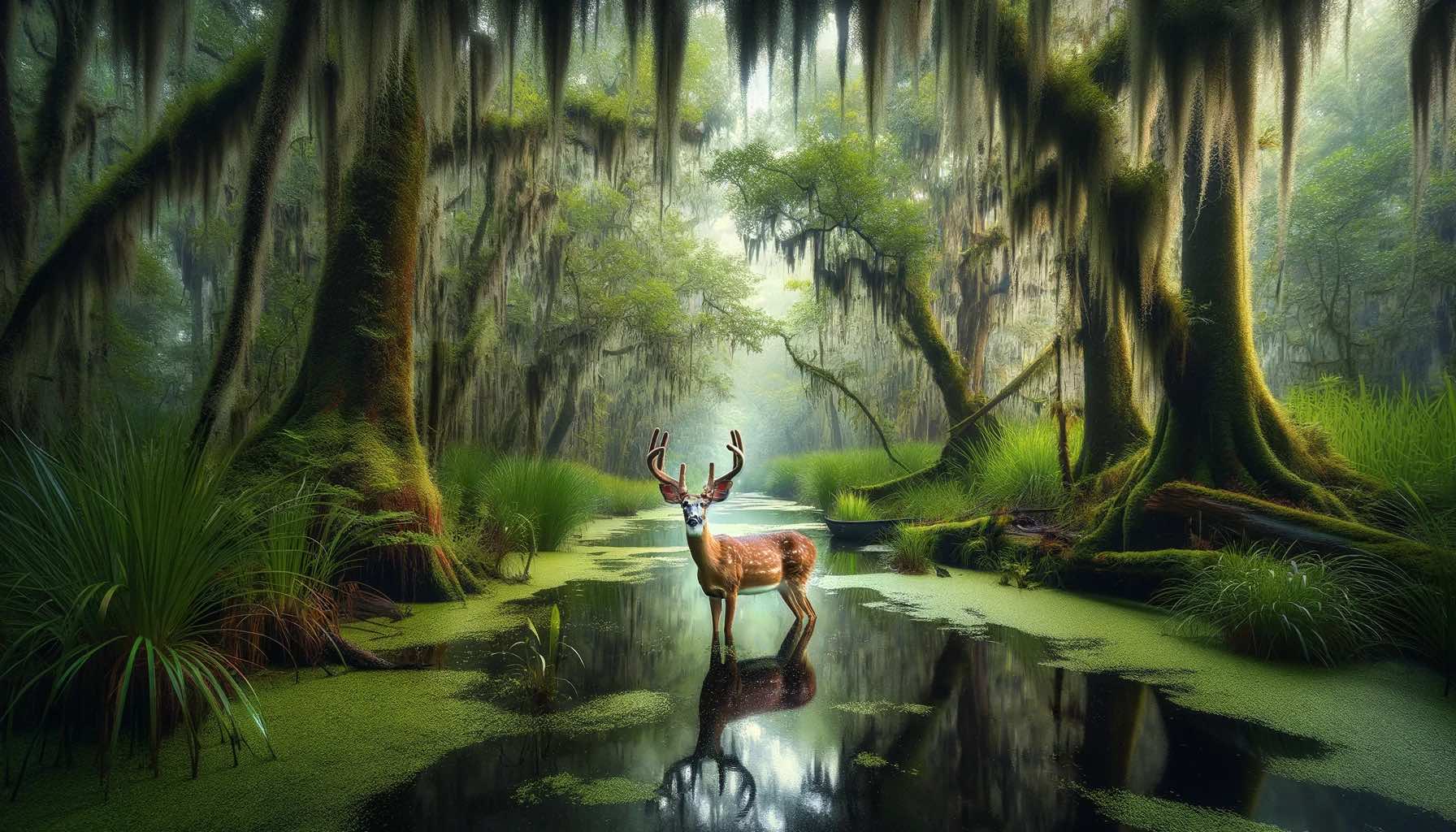Whitetail Deer Chronicles: Navigating the Swamps and Woodlands of the Americas

From the dense woodlands of North, Central, and South America to the challenging terrains of swamps, whitetail deer stand as iconic symbols of adaptability. Let’s unravel the captivating journey of these herbivores as they gracefully navigate diverse landscapes, displaying remarkable traits that make them true survivors.
Habitat Choices:
Whitetail deer, known inhabitants of wooded areas, exhibit a penchant for stability. Once they discover an area abundant in food, these creatures prefer to stay close, a behavior seen whether in the vibrant woodlands or the tranquil swamps.
Physical Attributes:
With male whitetails weighing between 100 and 300 lbs. and standing 6 to 7 feet tall, their robust stature is a testament to their resilience in various environments. Females, slightly smaller at 75 to 200 lbs., contribute to the dynamic balance of their communities.
Dietary Habits:
As herbivores, whitetail deer boast a diverse palate, devouring up to 600 plant varieties. From grasses to berries, their diet encompasses an array of options. Dawn and dusk witness their foraging rituals, showcasing the versatility of their four-chambered stomachs that can digest even tough vegetation and certain mushrooms toxic to humans.
Seasonal Transformations:
Adapting to the changing seasons, whitetail deer undergo a fascinating coat color metamorphosis. Their reddish-brown summer coats gracefully transition to dull grayish-brown as winter approaches, unfolding in a mere 1-2 weeks.
Antlers and Mating Rituals:
Male whitetails, or bucks, annually grow and shed antlers, using them as formidable weapons during the rut. Velvet-covered antlers in spring harden as the mating season ensues, marking a spectacle of strength and competition.
Sensory Marvels:
Whitetail deer navigate the world with unique sensory attributes. Their night vision, superior to humans, detects shades of blue and yellow while being blind to reds and oranges. Their heightened sense of smell, nearly six times more sensitive than humans, adds an extra layer of awareness to their surroundings.
Reproductive Journey:
With a gestation period of 200 days, a whitetail doe’s maternal journey begins with the birth of a single fawn, progressing to twins or triplets in subsequent birthing cycles. The mother’s dedication lasts over a year, ensuring the fawn’s well-being until the next cycle begins.
Athletic Prowess:
Whitetail deer’s athleticism shines as they sprint at speeds of 35-40 mph, leap 6-8 feet high, and showcase impressive swimming abilities, reaching speeds of 15 mph.
In the realms of both woodlands and swamps, whitetail deer unveil a captivating saga of survival, adaptation, and natural prowess. From their seasonal transformations to the intricate nuances of their behavior, these majestic creatures add a touch of enchantment to the diverse landscapes they call home.
